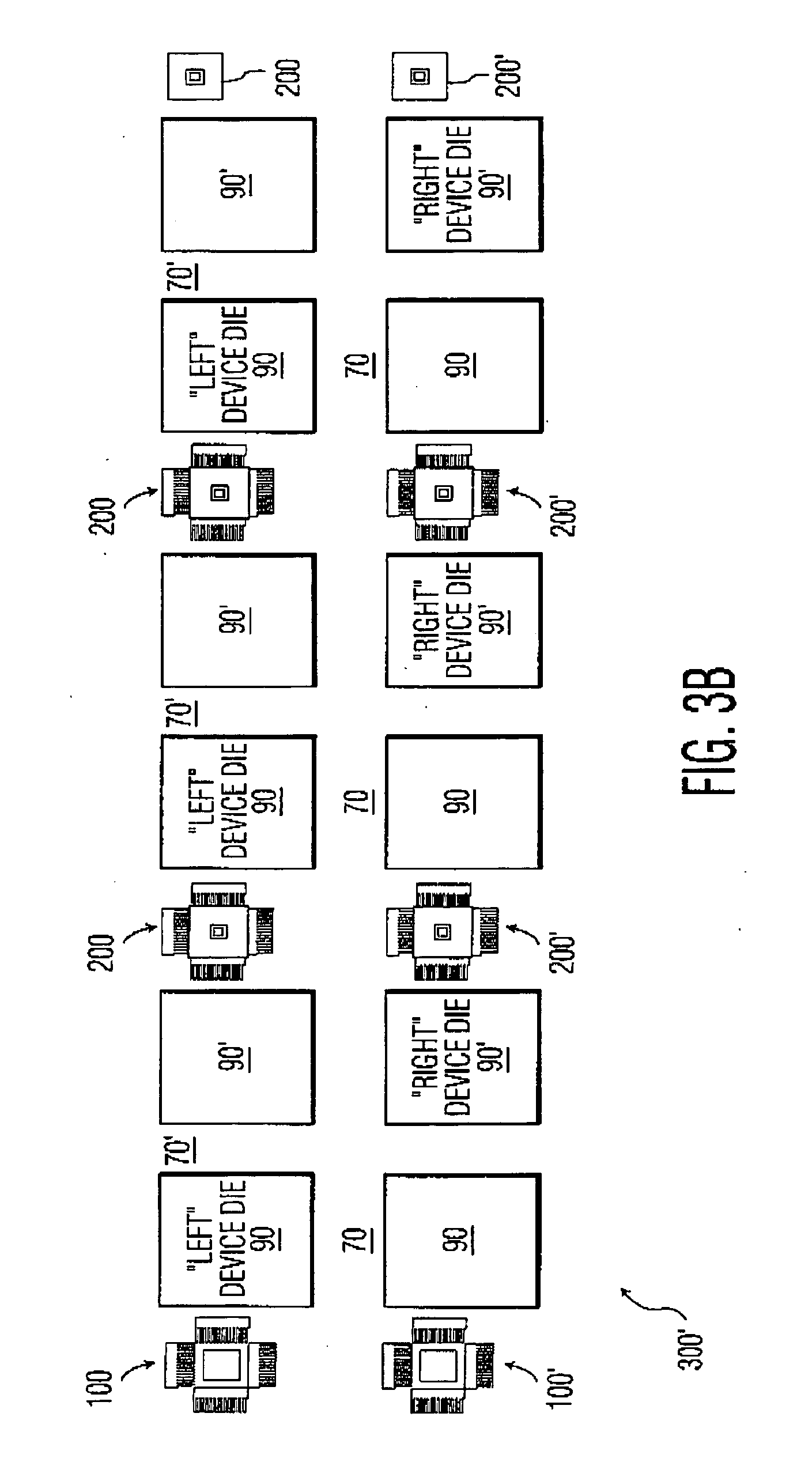Overlay box structure for measuring process induced line shortening effect
a lithographic structure and overlay box technology, applied in the field of semiconductor processing, can solve the problems removing wafers may not be suitable for production materials, etc., and achieve the effect of reducing the throughput time in the fabrication of wafers and increasing the cos
- Summary
- Abstract
- Description
- Claims
- Application Information
AI Technical Summary
Benefits of technology
Problems solved by technology
Method used
Image
Examples
Embodiment Construction
[0037] The present invention has been found to be useful in the measuring of actual line shortening width using an overlay measurement tool. End of line shortening as observed in a lithographic process is well known. The effect is due to the diffraction of light passing through the corners of open spaces in the reticle. Because of diffraction, the aerial image at the mask edge is steeper and more faithful along the line compared to that on the end of the line. At best focus in the process, there is still some line shortening, though minimized. As focus goes outward from the best focus in either a positive or negative direction, the amount of line shortening increases. Further discussion of line shortening may be found in the paper titled, “Understanding Optical End of Line Metrology” (Optical Engineering, Vol. 39. No. 7, July 2000, Pages 1951-1957)” by David Ziger and Pierre Leroux, which is herein incorporated by reference in its entirety.
[0038] In wafer fabrication, the user may ...
PUM
| Property | Measurement | Unit |
|---|---|---|
| wavelength | aaaaa | aaaaa |
| wavelength | aaaaa | aaaaa |
| wavelength | aaaaa | aaaaa |
Abstract
Description
Claims
Application Information
 Login to View More
Login to View More - R&D
- Intellectual Property
- Life Sciences
- Materials
- Tech Scout
- Unparalleled Data Quality
- Higher Quality Content
- 60% Fewer Hallucinations
Browse by: Latest US Patents, China's latest patents, Technical Efficacy Thesaurus, Application Domain, Technology Topic, Popular Technical Reports.
© 2025 PatSnap. All rights reserved.Legal|Privacy policy|Modern Slavery Act Transparency Statement|Sitemap|About US| Contact US: help@patsnap.com



